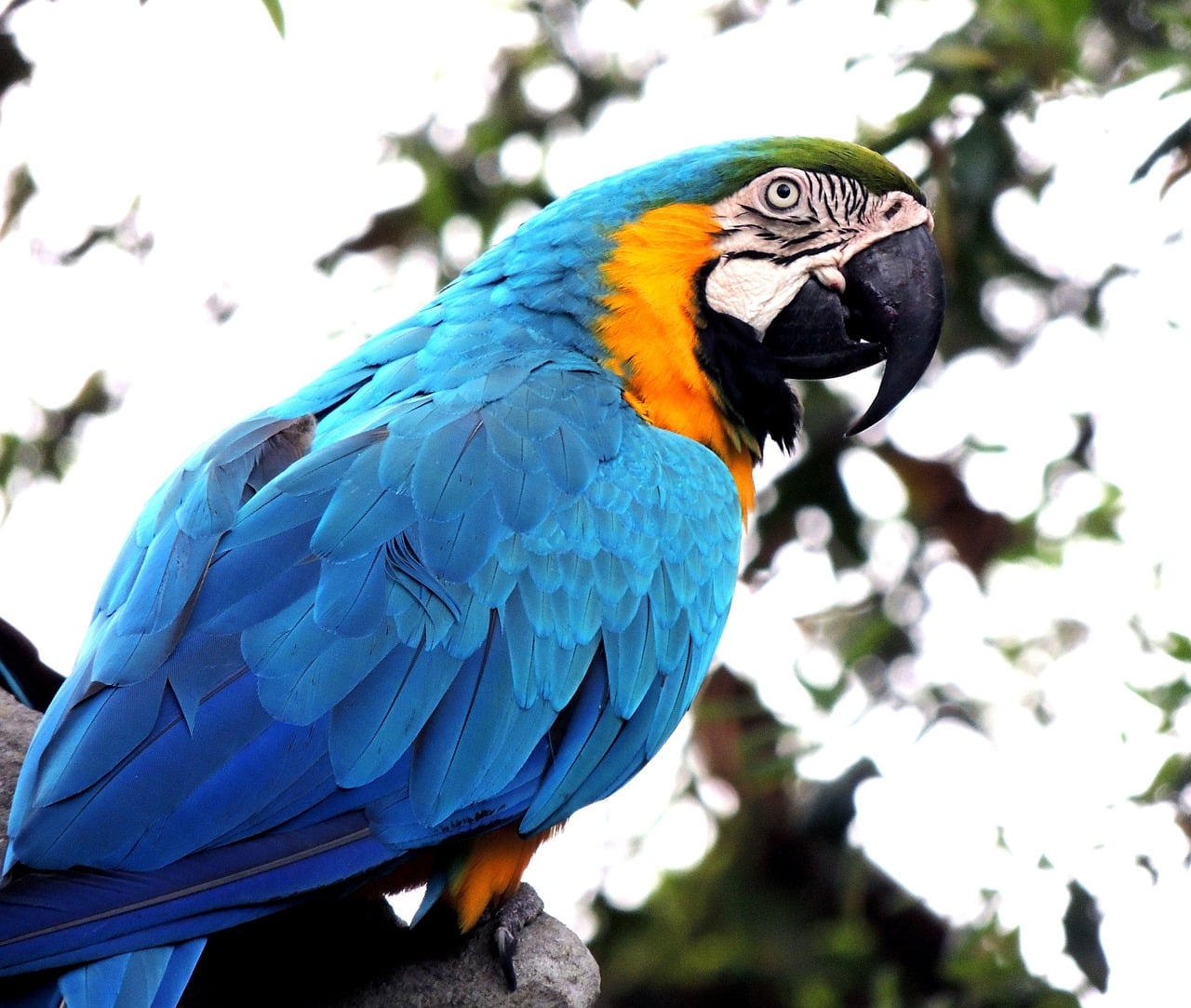How to Prevent Feather Picking in Parrots Through Environmental Enrichment?

Feather picking is a common yet distressing behavior often observed in captive parrots. The act of persistently plucking or damaging their own feathers can indicate a physical or psychological problem that needs immediate attention. The condition can lead to severe health complications if not addressed in a timely manner. It is crucial to understand the reasons behind this behavior to provide adequate care for your feathered companion. Environmental enrichment can play a crucial role in preventing this undesirable behavior in parrots. This article will explore how you can leverage environmental enrichment to prevent feather picking in your pet parrot.
Understanding feather picking behavior in parrots
Feather picking, also known as feather plucking, is a compulsive behavior seen in birds, particularly parrots. This self-destructive behavior involves the bird pulling out its own feathers, which can lead to bald patches, skin injuries, and in severe cases, can even cause life-threatening damage.
Topic to read : What’s the Best Way to Keep Your Pet Hydrated During Long Road Trips?
Feather picking can be triggered by a variety of factors, including poor diet, lack of social interaction, stress, boredom, or under-stimulation. It is critical to identify the underlying cause of feather picking to treat it effectively. However, remember, this behavior is not normal and should be addressed promptly with the help of a qualified avian veterinarian.
Environmental Enrichment: A Potential Solution?
Parrots are intelligent creatures, known for their curiosity, playful nature, and ability to solve problems. In the wild, they spend a significant amount of their time foraging for food, flying, socializing, and exploring their environment. In captivity, however, these activities are often limited, leading to boredom, frustration, or stress, which can trigger feather picking.
This might interest you : How to Provide Effective Mental Stimulation for Your Indoor Cat?
Environmental enrichment involves modifying the bird’s environment to provide physical and mental stimulation. It can involve changes in the bird’s cage, introducing new toys, varying the bird’s diet, and increasing social interaction. Environmental enrichment aims to provide the bird with opportunities for natural behavior such as foraging, preening, and playing, which can significantly reduce the risk of feather picking.
Modifying the Cage Environment
The cage is the primary living space for your pet parrot, and it should be designed to mimic the bird’s natural habitat as closely as possible. The cage should be spacious enough for the bird to fully extend its wings and fly short distances. It should also include perches of varying diameters and materials to exercise the bird’s feet and prevent arthritis.
Introduce a variety of toys that cater to your parrot’s preferences and encourage problem-solving. These could include puzzles, foraging toys, swings, ladders, or bells. Regularly rotate these toys to maintain the bird’s interest and prevent boredom.
Further, ensure the cage is in a well-lit, draft-free location, ideally with a view of the outside. Regularly clean the cage and replace the substrate to maintain hygiene and prevent parasitic infestations.
Diet and Foraging
Diet is another crucial aspect of preventing feather picking. Parrots need a varied diet that includes fresh fruits, vegetables, seeds, and bird-safe cooked meals. Being natural foragers, parrots enjoy the process of searching for their food. You can encourage this behavior by hiding food in various parts of the cage or using foraging toys. This keeps the bird mentally stimulated and ensures they spend time engaging in natural behaviors.
Social Interaction and Training
Parrots are extremely social creatures. They thrive in environments where they have opportunities for interaction. Spend quality time with your bird daily, talking, playing, or training. Training your parrot to perform simple tricks or tasks can provide mental stimulation, reinforce positive behavior, and strengthen your bond with your pet.
Social interaction doesn’t only have to be with humans. If possible, consider getting a companion bird for your pet. Just ensure they are introduced carefully and monitored to ensure they get along well.
Managing Stress
Stress can be a major trigger for feather picking in parrots. This could be due to changes in the environment, absence of the owner, or introduction of a new pet or family member. It is vital to maintain a calm, stable environment for your parrot and minimize sudden changes. If you need to introduce changes, do so gradually and monitor the bird’s reaction.
In conclusion, feather picking in parrots is a complex issue that requires a holistic approach to manage. While environmental enrichment can significantly help, it’s essential to consult with an avian veterinarian to rule out medical causes and develop a comprehensive treatment plan.
Enrichment Toys and Activities for Parrots
There is a wide variety of toys on the market specifically designed to stimulate and entertain captive parrots. These range from simple items like swings and bells to more complex foraging toys and puzzles. The most effective toys are those that encourage natural behaviors such as hunting, exploring, and problem-solving.
For example, foraging toys can be filled with your parrot’s favorite food or treats, providing both a mental challenge and a tasty reward. This can help mimic the bird’s natural behaviour of searching for food in the wild, providing necessary mental stimulation and discouraging feather picking.
Puzzles can also be a great source of entertainment for your parrot. Parrots are naturally curious and intelligent, and puzzles can provide a great mental workout. Puzzle toys can be filled with treats, encouraging your bird to solve the puzzle to get to the reward.
Swings and ladders can provide physical stimulation, helping to keep your parrot’s muscles strong and healthy. They also provide a fun and engaging way for your bird to move around the cage.
Remember, variety is key. Frequently rotating your parrot’s toys can help keep its environment interesting and stimulating.
Developing a Bond with Your Parrot
Many captive parrots form a strong pair bond with their human caretakers. This bond can be a significant source of emotional support for the bird, and can help reduce stress and mitigate feather plucking behaviors.
To foster this bond, spend quality time with your parrot every day. This can involve talking to them, handling them gently, or training them to perform simple tricks. Parrots can be very responsive to positive reinforcement training techniques, which can also help encourage good behavior and discourage feather picking.
Providing social interaction for your parrot doesn’t necessarily mean you need to spend all day with them. Even just spending time in the same room can provide a sense of companionship and security. Parrots also enjoy observing their human family members and participating in household activities.
Conclusion
Preventing feather picking in parrots requires a combination of environmental enrichment, social interaction, and stress management. By understanding your parrot’s natural behaviors and providing a stimulating, engaging environment, you can help prevent this distressing behavior.
Remember, while environmental enrichment is important, it’s not a substitute for veterinary care. If your parrot is showing signs of feather picking, it’s crucial to consult with an avian veterinarian as soon as possible. They can help rule out underlying health issues and provide guidance on how to manage this behavior.
In summary, feather picking is a complex and serious issue, but with proper care and attention, you can help your pet lead a happy, healthy, and feather-filled life. Parrots are intelligent, social creatures that thrive when their environment mimics the complexity and richness of their natural habitats. As parrot owners, it’s our responsibility to provide this kind of environment for our feathered friends. With some creativity and dedication, we can help our parrots live the quality life they deserve.
